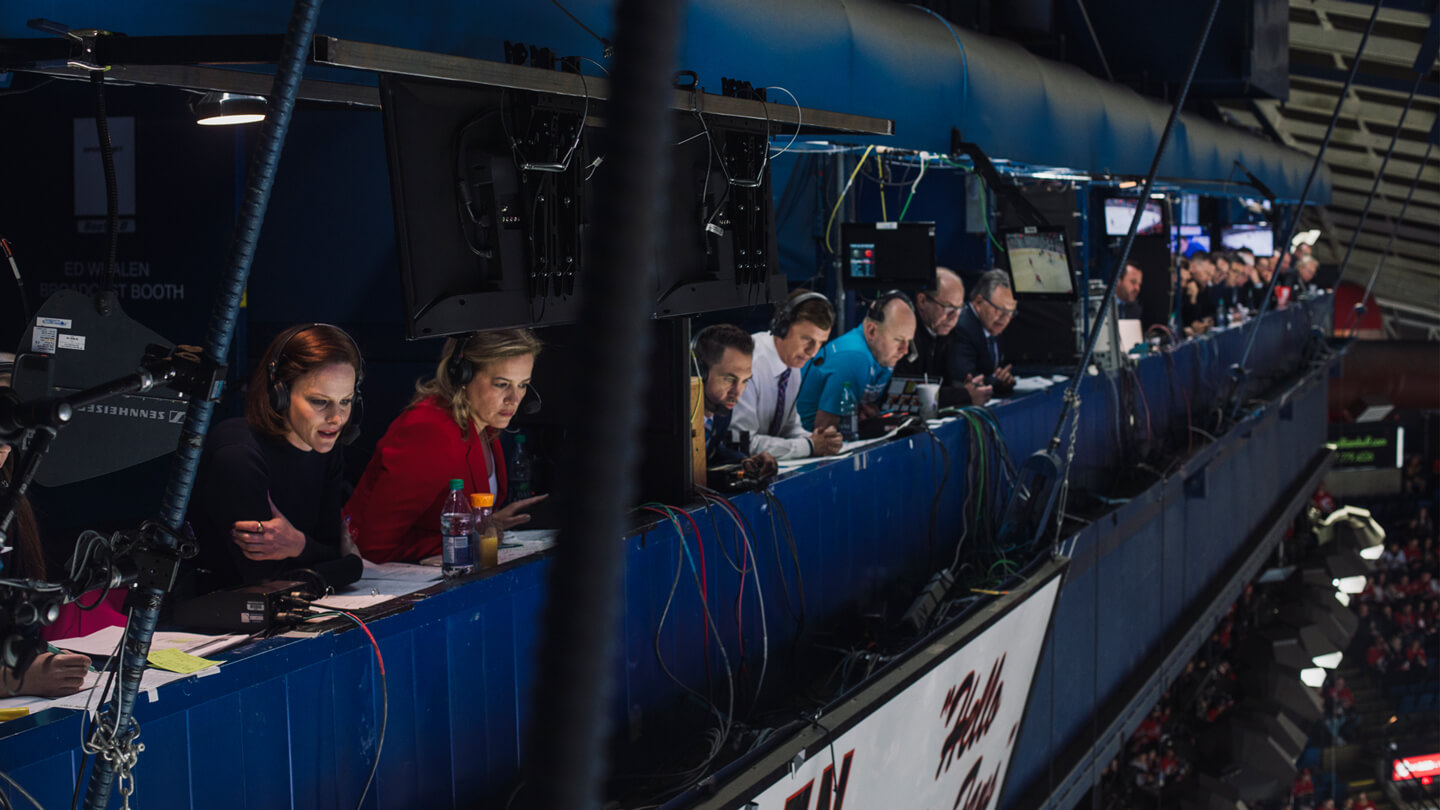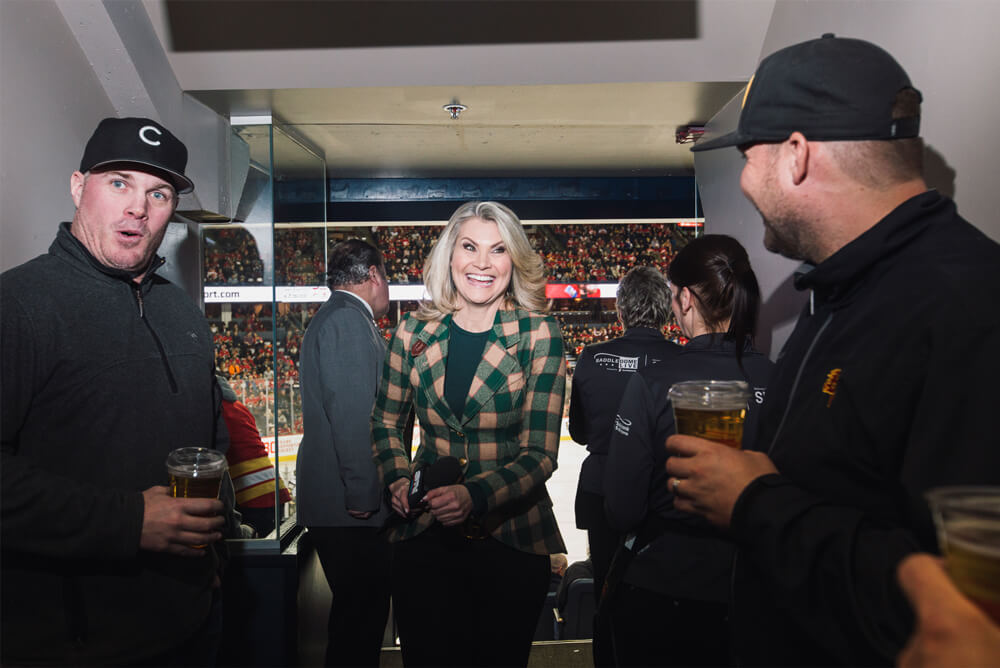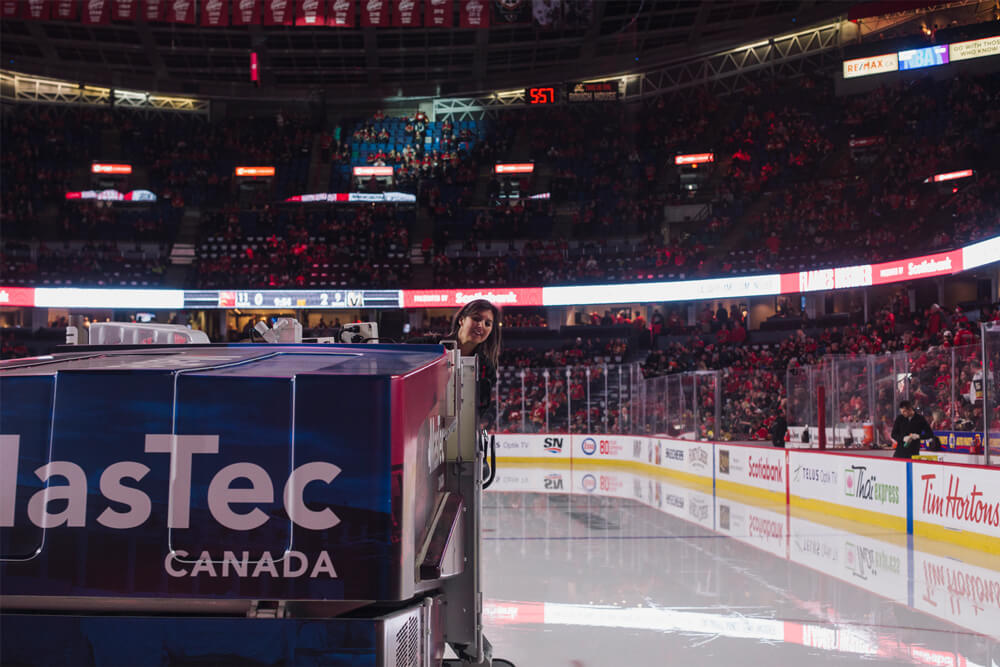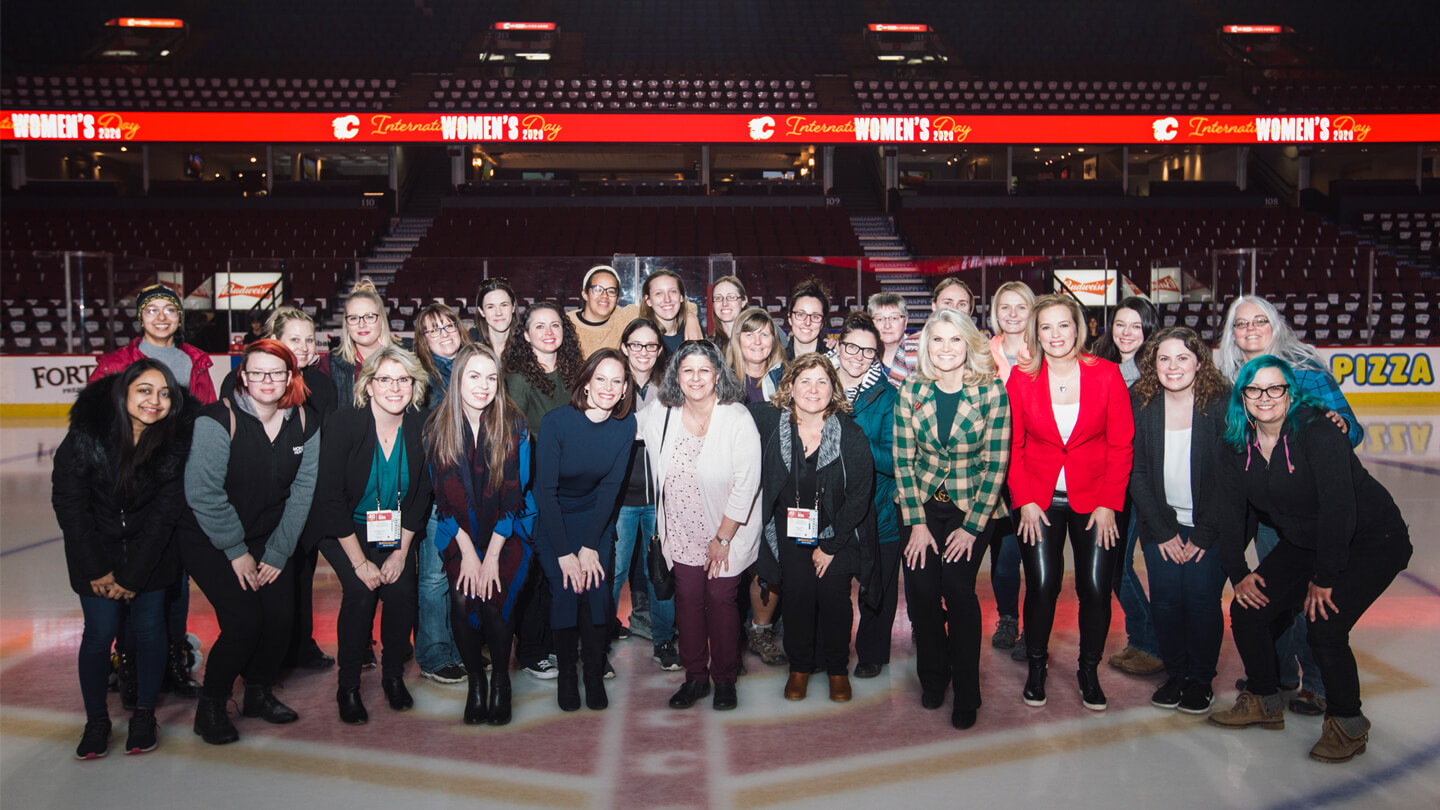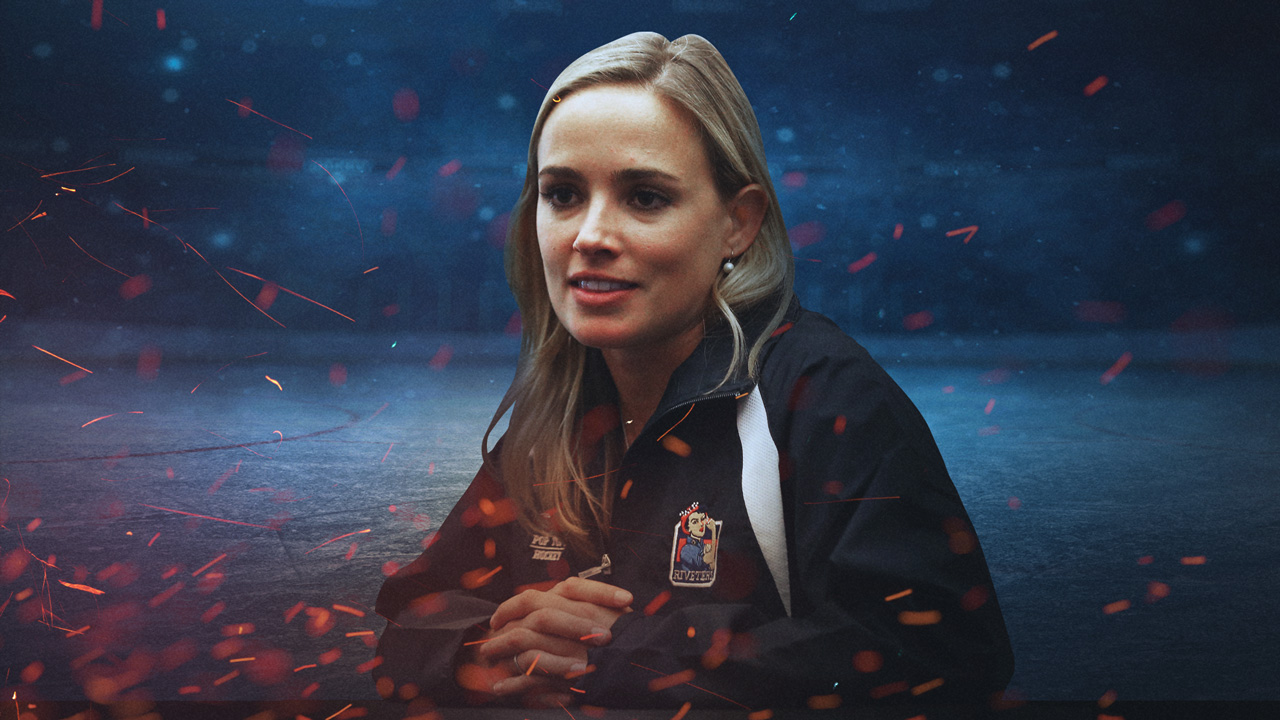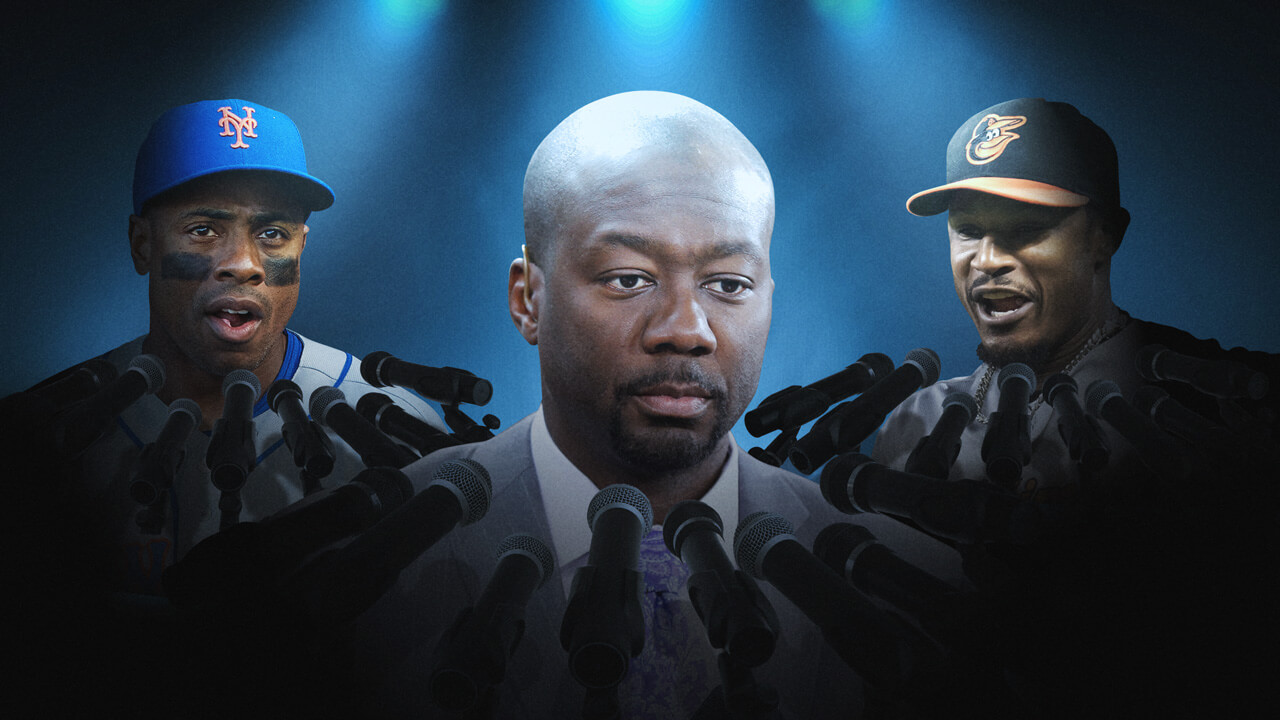Hextall’s path hasn’t been easy. In 2016, she was let go during larger organizational changes at Sportsnet, where she’d worked as a studio host for Flames games, which forced her to think about her career differently. It wasn’t long before she began moving forward on a new way into the game: Play-by-play. “I just thought, ‘Why not?’” she says. “No other females are doing it. So, somebody’s gotta do it … and if you don’t strike at it, somebody else is going to, and you’re going to wish you would have. And that’s really what drove me to do it.”
In search of advice, Hextall reached out to one of the best — Emrick, with whom she had a connection from her time as a reporter in the industry. His advice? “Get into an empty booth at a rink at a junior game, anywhere I could, and just start practising,” says Hextall. “So, that’s exactly what I did.”
In the fall of 2017, she went to a Manitoba Moose game and, alone in an empty booth, she took out her cellphone, hit record and started talking. “I was horrible,” she says with a laugh, thinking back. “But, I loved it.
“You’re so involved in the game in a way that when you’re a studio host or a rinkside reporter, you’re not,” she continues. “You can’t even blink, because you might miss something.”
Hextall made her play-by-play debut in January 2018 with a four-game set for the Canadian Women’s Hockey League. She called more CWHL games the following season before the league shut down, and last March made history when she became the first woman to call play-by-play for a men’s NCAA hockey game.
Getting the call up to the big leagues for this Sunday game brought nerves, but also reunited Hextall with a dear friend and mentor: Cassie Campbell-Pascall.



